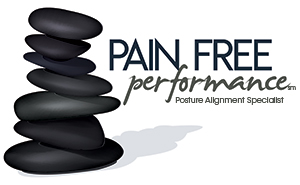Understanding Postural Alignment Therapy (Egoscue)
The Postural Alignment Therapy recognizes that fundamental anatomical, physiological and biomechanical principles govern the human musculoskeletal system. With only very rare exceptions, each person is born with certain core design characteristics that serve as a strong, resilient and efficient operational platform. By using a blueprint of this extraordinary platform as a guide, the goal of the Method is to eliminate disparities that can occur when injuries or negative lifestyle conditions affect the way the musculoskeletal system actually moves as opposed to its underlying structural parameters. By restoring muscular balance, skeletal alignment and the harmonious interplay of internal systems, the body takes a quantum leap in healing power, stamina and physical capability. The Egoscue Method, developed by Pete Egoscue is not a form of treatment that chases after short term, symptomatic relief. Rather, symptoms provide a common sense starting point, a working frame of reference based on each individual’s unique combination of strengths and limitations. Our primary objective applies to everyone we seek to help—to eliminate musculoskeletal system disparities and the resulting postural dysfunctions that interfere with pain-free living.
A key part of the “blueprint” we refer to is familiar to all health professionals—it is known as the standing normal anatomical position. Without being overly technical the hip, knee and ankle joints are aligned vertically in paired stacks, each of which is subdivided by three horizontal parallel planes that extend through the joint pairs, creating what amounts to a partial dynamic load-bearing grid. The grid’s structure is completed by the shoulder joints which are in a functional interactive relationship with the major joints below instead of being aligned vertically like the others, although they too (the shoulders) operate individually and as a pair on a fourth parallel horizontal plane.Topped by the head, placed over the S-curved central spine that links the hips and shoulders, the grid allows upright posture and bipedal motion capable of a great range of movement. In addition, there is only temporary incidental rotation in the pelvis, legs, knees and ankles. (Think of rotation this way: Looking straight down on your upright body from above, draw a imaginary clock face with your head in the center facing twelve o’clock. In design position a straight line runs from hip joint to hip joint starting at nine o’clock and extending through the other hip joint, exiting at three o’clock. In such a configuration, there is no rotation, but if the lines depart from nine and three, say ten and four, rotation is present as the hips move off the design plane. This analogy works for the other load-bearing joints and the big leg bones. It is not unusual to find left-to-right pelvis rotation and right-to-left shoulder rotation.) The body is intended to rotate by twisting and turning, ascending and descending, in reaction to variations in the terrain and other temporary situations and then return to vertical alignment. When it remains stuck in rotation the integrity of the structure can be compromised.
As you probably have concluded by now, the load-bearing grid we have just described means that vertical and horizontal alignment is all-important to both the musculoskeletal system’s structural integrity, smooth functioning and full, pain-free capability.
An individual whose body deviates from this design must do so for a reason. That reason is, (in cases that do not reflect past injuries), a muscular imbalance in strength and/or flexibility. An individual’s standing, static posture provides essential information to our therapists in predicting what the body will do as it moves. These predictions can be confirmed and often reinforced by observing the patient’s gait, the way he or she strides forward, turns and executes other routine maneuvers. In the process, changes in muscle tension/length may be detected, along with atrophy of underutilized muscles or damage to over-used muscles that results when one group of muscles is repeatedly substituted for another that is more appropriate to the task. Such postural anomalies, we describe them in general as “dysfunctions,” directly impact joint mechanics.
To learn more about The Egoscue Method® go to: www.egoscue.com
